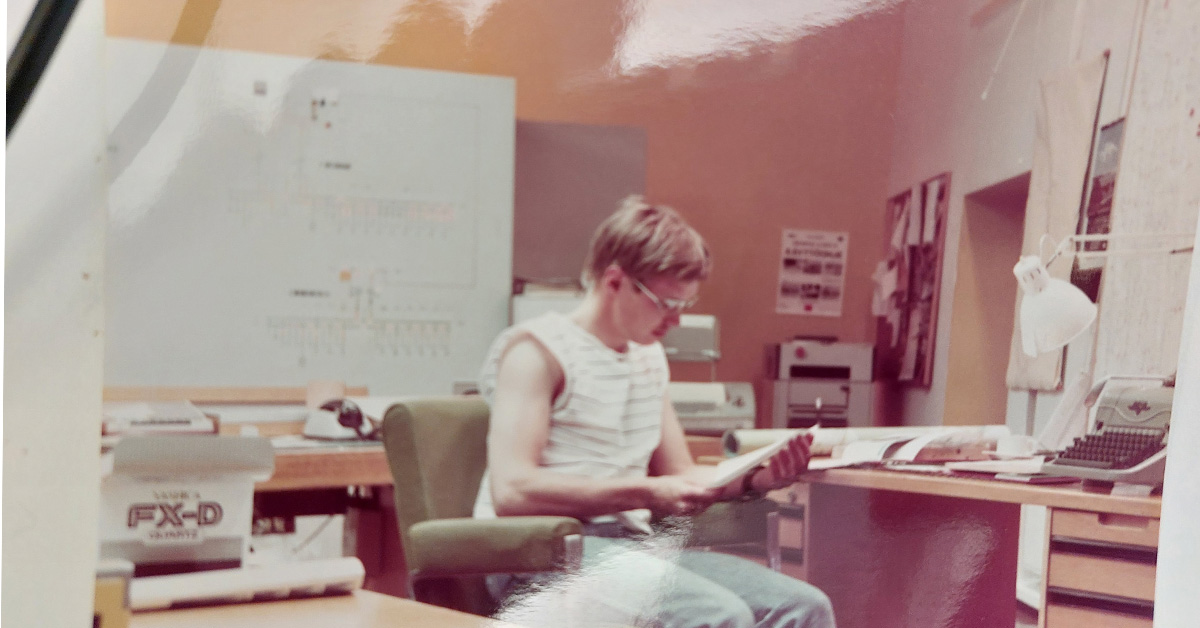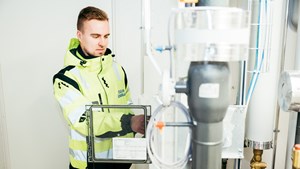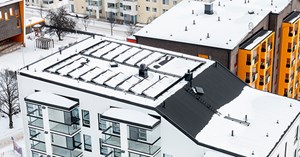Matti Lehto’s 40-year career at Oulun Energia—an eventful career without parallel
Matti Lehto, who has worked at Oulun Energia Group for over 40 years, has had an eventful career. His career path has taken him from being a 19-year-old electrician through the energy transition all the way to today’s new challenges.
Lehto, who is currently acting as the operations manager at Oulun Energia Sähköverkko Oy, is responsible, as the supervisor for operations and electrical works, for the construction, operation, maintenance, control room work, protection, terrain planning, and mapping of the electric power network. Lehto’s team is also responsible for preparedness and emergency matters, as is the whole Group. Over the past six months, preparedness for power shortages has held an increasingly significant role.
Propelled in his career by an interest in the electricity sector
I ended up in the sector because there was a shortage of electricians in the 70s and the sector was my primary area of interest. After comprehensive school, the door of opportunity opened to train as an electrician at the Kaukovainio vocational college. After the army, I further strengthened my skills in Varkaus, after which I went around asking for work, including at the Toppila power plant, where there was a part-time vacancy. Toppila gave me the first job that corresponded to my education.
As a younger electrician, I started working in Esko’s team, who was the lead electrical engineer. During the first summer, we were replacing the lighting of the Merikoski power plant and I propped Niedax mounting rails above Tainter gates at 20-centimetre intervals across the entire power plant. Holy smokes was there iron in the concrete! Sweat poured and drill bits were used up on that flatbed built on a crane.
As a young employee, I was given new nicknames by my colleagues whenever the situation called for it. One week, for example, I was proppumatti—Propper Matti; kravattimatti—Necktie Matti—in the control room; and when I spun the company Lada on the Tuira bridge, I became ruttumatti—Crumpled Matti.

Image: Matti Lehto’s photo album. As the on-duty operator at the Merikoski control room, in the early 80s, I think.
I trained to be the operator of the control room at the time and my employment was continued for a total of two years in spurts. When they announced the job was ending, I went to ask the supervisors at ENKO for work. The network supervisor Kalle asked with a low voice: “Boy, can you make it up the pole?” I told him that I could even do it upside down if the job depended on it.
I got a job in the building management team, which performed connection installations and construction site distribution centre installations, and took care of the electric power network faults during the day. As a young man, I felt like I was at the peak of my career in those management duties—at the apex of the pole. Sometimes we would lay out cabling for electricity for the sausage booths at the ice rink or would drive the snowmobile to change out the lamps on the ski track. At times I worked shifts at Merikoski.
I also stood in collecting unpaid invoices and cutting off power. In the morning, I would get a list of the addresses with outstanding invoices, to which I then made the rounds. If the customer had money, I took the payment and issued a receipt. Around noon I would bring a backpack full of cash to the office and set off again with a new list.
Merikoski—a meeting place of many in the energy sector until 1997
Merikoski was a big centre until 1997, with lots of staff. Dances were sometimes organised on the fourth floor. The operations supervisor Heimo played guitar while Juhani played the accordion. As the youngest employee, I always got to fill in for Juhani so that he got to play.
When the time came for digitisation, a computer terminal was brought to Merikoski, which the operations supervisors used to record water data and production. Then came a traffic light terminal—a holy contraption—that almost had you kneeling before it before you dared to touch it.
Merikoski operated as a central control centre, from which Merikoski’s machines and the electric power network’s remote-controlled switches were controlled. In addition, there were streetlight controls, a traffic light terminal, district heating network control, and the monitoring of the city’s properties.
In 1993, there was a renovation of the Merikoski generators and the control systems were replaced. The drop height was raised to 11 metres. The operations supervisors moved to a new control room on Kasarmintie. With the advent of automation, Merikoski was eventually made into a ghost plant in 1997.
The advent of automation brought on a move from Merikoski to Toppila
I returned to Toppila to be a remote operator, as did the other on-call employees from Merikoski. I worked in three shifts, operating the district heating network and inspecting the heating plants and pumping stations. I was also assigned surveillance of the OYS heating plant.
In Toppila, I was given the opportunity to take a course to become an assistant chief engineer. As the course approached its end, remote operator Matti asked for a ride to Kasarmintie, where he was planning to sign up for a qualification degree to become a chief electrician. When we got there, he told me I should sign up too. Let’s do it together.
After completing the chief electrician qualification, my colleague persuaded me to come study at the Kemi Polytechnic (now Lapland University of Applied Sciences). When at home I announced that I thought I’d add four years of travelling to study at Kemi in addition to going to work, my wife took my hand and thanked me for thinking to add this to my load.
While studying at the Kemi Polytechnic, my work changed to be the head operator at the control room, and when we acquired the new Trimble operating support system, my final project was to write an opus on its development of use. At the age of 45, I was done with school. What remained was the school of life, which is still teaching me things.
Polytechnic student to operations manager
After the former operations manager retired, I transferred into my current job. The role of operations manager was included in the work, and it later also included the role of head of electrical works. The electric power networks were also incorporated in 2006. In the last few years, I feel that one of the most important tasks is to be prepared for electricity shortages and major disturbances.
The electricity sector has changed dramatically. In a busier direction, but most of the changes are good. Construction sites are safer, many operations are automated, and there are much fewer faults. Customers are always informed of a power outage in advance if it is not caused by an unexpected fault. Before when a supervisor would call and order a power outage due to maintenance work, the customer could only wonder why the lights wouldn’t turn on at home.
I’ve been pleased. I have been provided with responsibility, task rotation, and training opportunities; it’s mostly always been thanks to my initiative. A responsible person always looks themselves in the eye each morning in the mirror. Now I look forward to my retirement and the ability to do things with my two grandchildren. In the future, the only thing I will write is Letters to the Editor. I’ve spent a long time enjoying my work, but it’s time to give space for the younger generations to flourish.



